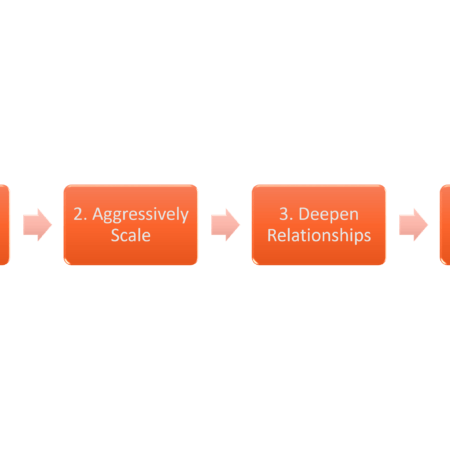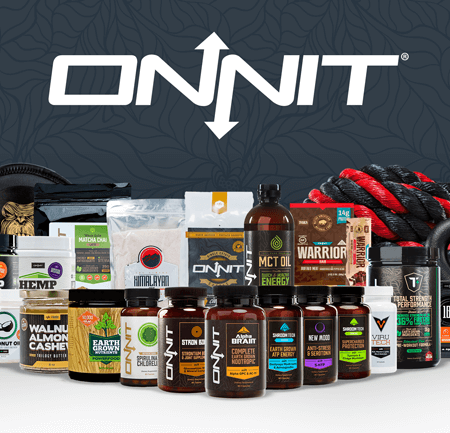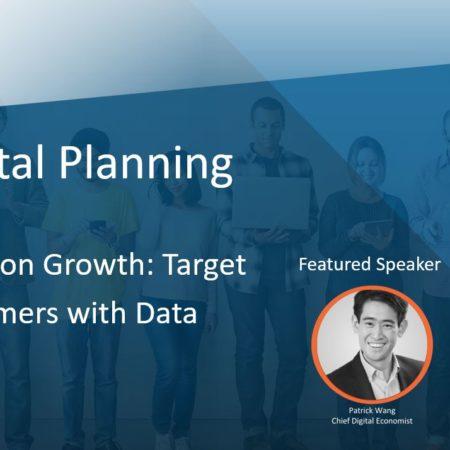If you think your home page is your digital front door, think again.
“If you build it, they will come.” For many, this has been the underlying strategy for website development, with much of the focus placed on home page design, content, and navigation. Unfortunately, just building a website and throwing it into the digital ether, hoping that your target consumers will organically stumble upon it, is a job half done.
Based on Forrester’s The State of Search Marketing, 2017, 42 percent of people find websites through natural search engine results, from the likes of Google, Bing, and Yahoo!, while 36 percent rely on Facebook to guide them through their digital journey. This means that nearly 80 percent of traffic to websites comes from a combination of search and social. But this doesn’t necessarily drive traffic to your home page. It’s more specific than that. A click on a search link or a Facebook ad will more than likely drive consumers to a landing page with relevant product, customer, or promotional information. As such, you could argue that many of your customers come to your site through the side door, the backyard, or the garage.
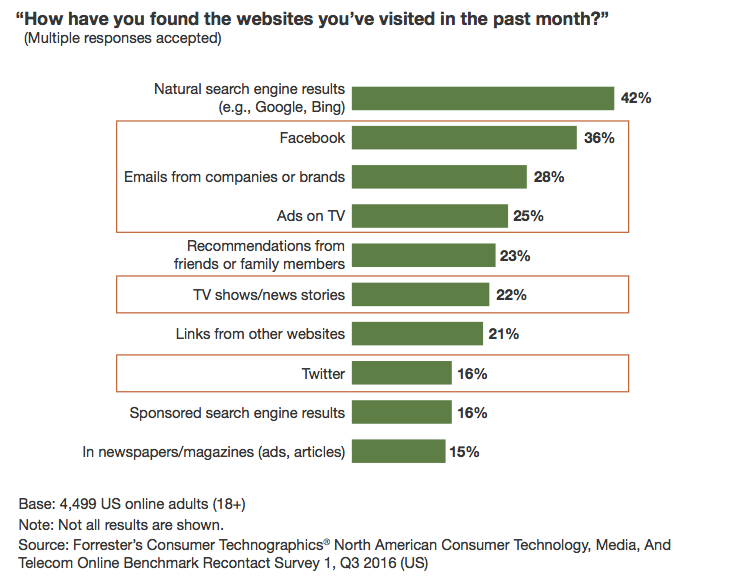
If 42 percent of traffic is coming to your website through natural search results and another 16 percent through sponsored search engine results, then we might as well argue that the Google search results page is much more of a digital front door for your business than your very own home page. Seeing that well over half of traffic to websites comes from a combination of both paid and organic search, you would think that brands would go out of their way to dominate the search results page whenever possible. Unfortunately, we know that’s simply not true. Companies aren’t doing enough to keep this digital front door open. They aren’t using all of the digital customer acquisition tools at their disposal to achieve maximum exposure and premium placement on the search results page.
When a consumer types in a search query, it’s the equivalent of raising a hand and saying, “I have a specific need. Please help me.” This is pure gold. When you have access to this kind of intent, you have no choice but to do whatever it takes to engage consumers with your brand. Sometimes it requires multiple means of engagement, especially as the search results page is quickly evolving to index more content beyond organic search results alone – paid ads, local listing information, partner offers, social media posts, etc. And it’s no secret that Google has gradually pushed organic search results further out of sight and out of mind, with the number of organic placements above the fold changing from four three years ago, to only one today. At the same time, paid ad units above the fold have dropped from seven to four.
To put it bluntly, if you aren’t owning the search results page, your front door to consumers is slammed shut – especially knowing how the evolution of the search results page is making it even harder for consumers to serendipitously discover websites like yours.
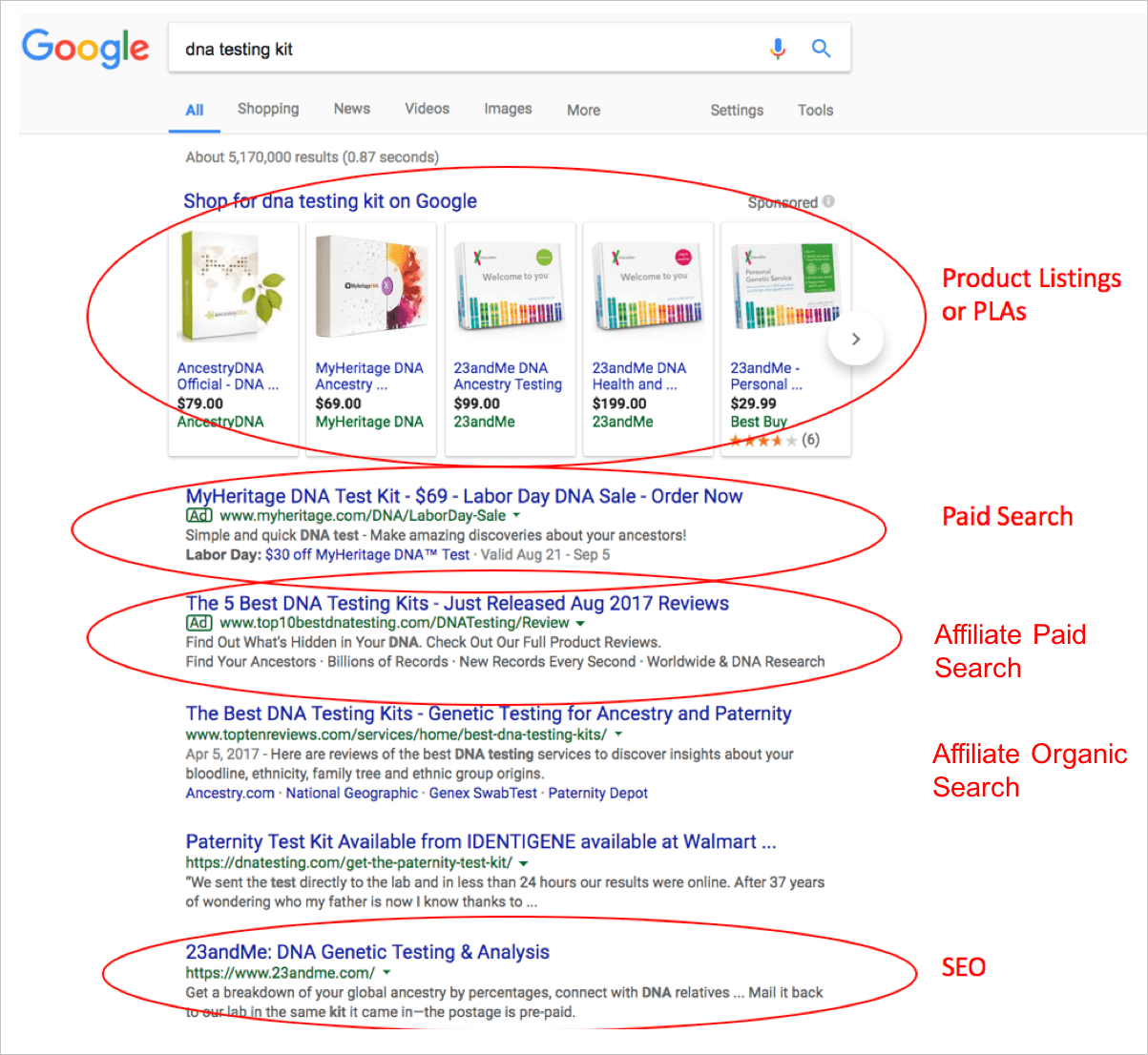
Maximizing the search results page is like maximizing shelf space at the grocery story. Think about the last time you were walking down the cereal aisle. You most likely had over one hundred different options to choose from. So, how do you choose? For starters, you’ll likely look at the cereals at eye level first, which, for the purposes of this example, are all by General Mills. Since you don’t have time to peruse every brand, there’s a good chance you’ll choose a cereal directly in front of you. If you don’t like what you see, you still have a lot of other options to choose from on the other shelves. The point is, General Mills has locked in a premium position in the cereal aisle, intentionally done to draw consumers in.
This is no different than wading through the content on the search results page. When a consumer inputs a search query, they want an answer – and fast. The likelihood of them clicking on a link at the top of the page, whether it’s a paid or sponsored ad (like the General Mills shelf) or other contextually relevant indexed content, is fairly high. It really comes down to what search results best address the search query at hand. If they end up needing to scroll further down the search results page to find exactly what they’re looking for, seeing your brand show up in multiple positions will only increase their chances of knocking on your digital front door.
What this means for you – and your website – is that SEO is not enough on its own. It gets your site indexed on the search results page organically, but given the fierce amount of competition above the fold, SEO alone will not generate the amount of website traffic you desire. This becomes even more pronounced for businesses in highly competitive and saturated industries.
To dominate this “shelf space,” your paid, partner, and earned marketing must work together seamlessly. This could involve a combination of search engine marketing (paid search ads, pay-per-click, pay-per-call), affiliate marketing, paid product listings, and directory listings. Depending on the nature of your business or the type of action you’re trying to drive, your approach to owning the search results page may vary. But make no mistake, you need to own it.
Now, here’s the kicker: there’s absolutely zero value in owning the search results page if your website or landing page experience doesn’t deliver on the search query or fails to provide essential information that converts a click to an actual customer. In fact, in Forrester’s The Best and Worst of Paid Search, 2016, it was found that 22 percent of landing pages reviewed did not relate to the keyword (from the search query) or were optimized for mobile. Why spend to get premium placement on the search results page if your website can’t go the extra mile?
The harsh reality is, getting found online isn’t always easy. It actually involves a lot of moving parts – from building and optimizing your website to strategically deploying paid search – that must operate in lockstep to drive measureable results. As you design that shiny new home page, try not to get too fanatic about perfecting the content, wordsmithing the calls-to-action, or systematically sprinkling keywords throughout. Consumers are less likely to see this as your digital front door because, for better or worse, Google owns that real estate now.



